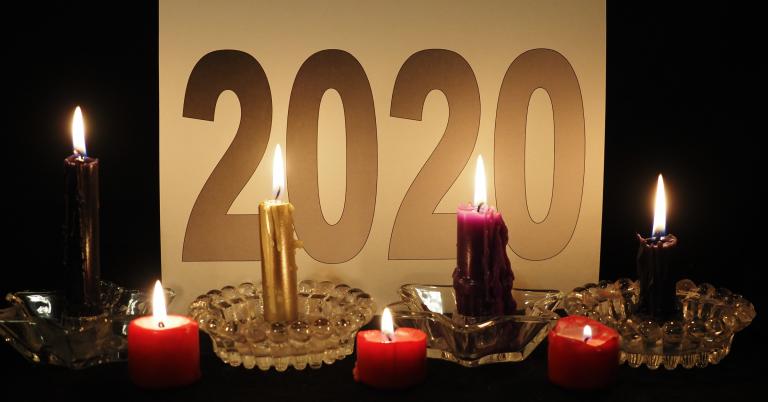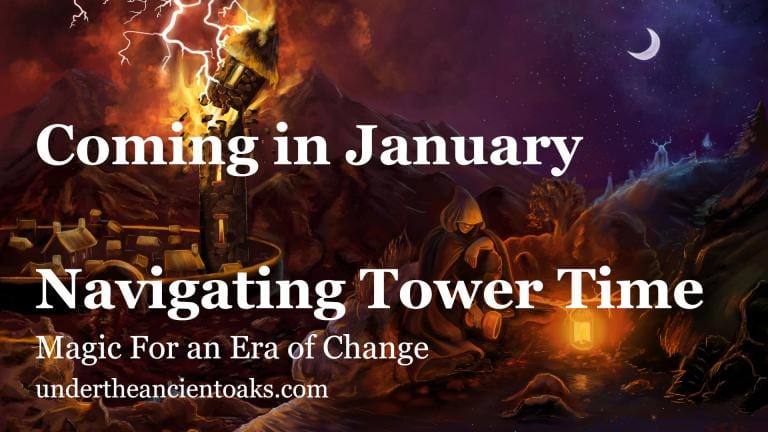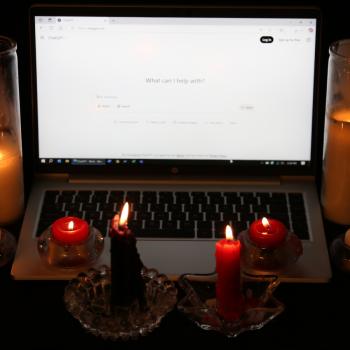Does anybody really want to look back on the dumpster fire that was 2020? Probably not. But we need to do it anyway.
Every December I do a year-end retrospective. In good years they’re a celebration. In bad years they help make sure I don’t overlook the good things that happened. Mainly, they help me put things into perspective. As bad as 2020 has been, for me it hasn’t been as bad as 2009, much less 1995 (my Year From Hell) or 8th grade (the worst year of my life).
I’ll do my personal look back at 2020 next week – that will remain private. In this post, I want to go over some of the important things that happened in the wider Pagan community.
Or at least, the ones I’ve seen or heard about. Paganism and witchcraft are more diverse and decentralized than they were even a few years ago – I don’t think anybody can keep up with all of it. I certainly can’t. So this is my take on 2020 in the Pagan world, and it’s in no particular order.
If I missed something you think was important, list it in the comments.
1. Covid-19 and the U.S. election
The two events that dominated the mainstream world also dominated the Pagan world. Scanning the All Posts listings for this year, I counted 19 posts directly related to the election, and 19 more directly related to Covid. And that doesn’t include the online rituals. My blogging has always been a blend of devotion and politics, of timeless truths and current events. Most Pagan bloggers do the same, in their own way.
Covid canceled our gatherings and disrupted our worship. The election and its bizarre aftermath dominated our discourse, because the stakes were so high.
And neither of them are over yet. The emergence of a vaccine is hopeful, but it will take months to vaccinate everyone. The election is over except for Congressional affirmation on January 6 (which will happen, even if some Republicans try to derail it) and the inauguration on January 20, but undoing the damage from the last four years will take longer than any one Presidential term.
It’s up to us to do our parts as engaged citizens, both to end the pandemic and to build a better world here and now.
2. Festivus Interruptus
2020 was the final year for Pantheacon – it went off just before the Covid outbreak began in the United States. Last year I said that Pantheacon – the largest indoor Pagan gathering in the world – would be replaced by multiple smaller events. We’ve been headed down that path for the past couple of years.
And then Covid happened.
I went to at least one out of town, overnight Pagan gathering every year from 2009 through 2019. In 2017 I went to six. That was also the year my first book The Path of Paganism came out – funny how that works.
This year I went to none.
Festivals have been a key part of the Pagan movement for decades. They’ve become less important, but they’re still a great way to connect to like-minded folks that Facebook and Twitter can never duplicate. This year we’ve had to learn to do without them. I don’t expect any of the Winter or Spring conventions to take place in 2021. Hopefully we’ll be able to start gathering again in the Summer, but we just don’t know.
Does absence really make the heart grow fonder? Will we see a surge of interest in festivals and conventions once we’re able to have them again? Or, having done without them for over a year, will a critical mass decide they’re not worth the cost in money and in time?
We will see. But I’ll be there as soon as it’s reasonably safe to go.
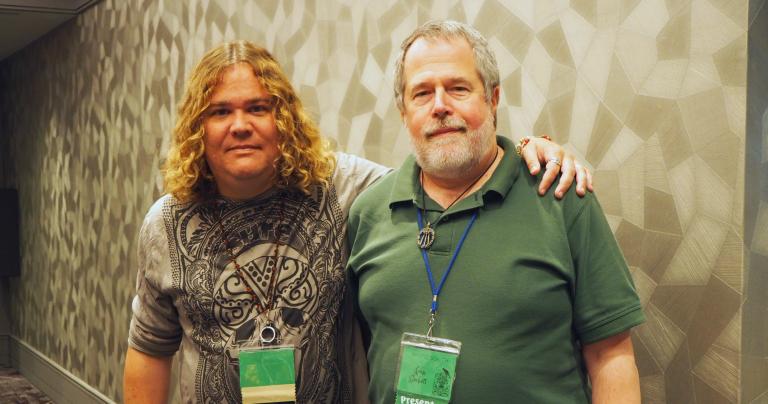
3. The huge success of Psychic Witch
Pagan books are a niche market. Honestly, most books are a niche market: one publishing industry website says the average non-fiction book sells 250-300 copies in the first year. John Hunt Publishing (who owns the Pagan-oriented Moon Books imprint) calls one of their books a “bestseller” if it sells 5000 copies in its lifetime.
By these standards, Mat Auryn’s new book Psychic Witch is a best best best seller. Last I heard it’s in its seventh or eighth printing in less than a year. For comparison, The Path of Paganism – which has sold well by Pagan standards – took over a year to need a second printing.
Psychic Witch has sold so well for two reasons. First, it’s an excellent book, and the right book at the right time. In my review, I said it’s “a beginner’s guide to psychic perception and energy work. It’s the best book I’ve found for that purpose.” It’s the book I was looking for when I was 13 and wanted to learn some hands-on, non-religious magic.
The second reason is that Mat worked his ass off promoting the book. Sometimes things “just come together” but more often, they come together because someone makes them come together. Mat is the hardest working man in Paganism (with apologies to James Brown) and a good person. I couldn’t be happier for him and his success.
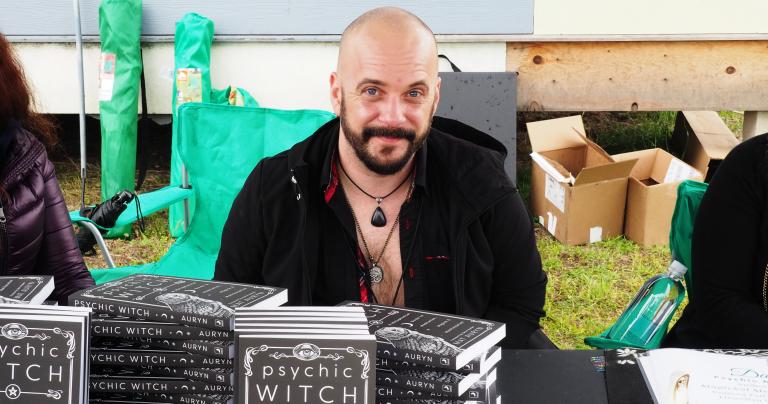
4. Eimear Burke is the new Chosen Chief of OBOD
In 2018, Philip Carr-Gomm announced that he was retiring after 30 years as Chosen Chief of the Order of Bards, Ovates and Druids. Replacing him would be Eimear Burke, an Irish Druid and a Priestess in the Fellowship of Isis. A formal installation ceremony was planned for Summer Solstice 2020 in Glastonbury.
And then Covid happened.
The installation was conducted virtually – Damh the Bard presented it on DruidCast Episode 159.
I like what Eimear’s doing. She says “there’s nothing in OBOD that needs to be fixed.” At the same time, she brings an Irish perspective (and eventually, some Irish material) to a Druid order that’s been dominated by British people and stories. That’s a good and necessary thing.
Eimear was at the OBOD Gulf Coast Gathering last year, but I was teaching at the Sacred Space Conference that weekend. I hope to meet her in person before too terribly long – I’m happy to have her as our Chosen Chief.
5. White Supremacist Pagans get their own church
In most cases, a group repurposing an abandoned church into a Pagan gathering place would be a great thing. But not when the group is the Asatru Folk Assembly, who claim that Norse Paganism is for white people only.
Local residents – including local Heathens – opposed permitting the use. The Murdock, Minnesota city council approved it, largely because they feared the expense of a lawsuit if they denied it.
Heathens Against Hate, which is part of The Troth, issued a statement saying “Heathens Against Hate stand against the hate and extremism espoused by the AFA and their supporters. We support inclusive Heathenry, where we welcome all who welcome all.”
This is your periodic reminder that DNA is not a religion and the Gods call who They call.
6. The rise of Instagram and TikTok witches
This started well before 2020, but I’ve seen it explode this year. I think that’s less because everything’s moved online due to Covid and more because the phenomena is growing steadily on its own.
The Instagram and TikTok witches are mainly young women who adopt the aesthetic of witchcraft, primarily for self-empowerment. Most are simply celebrating witchcraft as they understand it. But a few are teaching, and that’s a concern for some established practitioners.
I checked out a few of these young teachers. Not a statistically significant sample, but a few. For the most part, they’re teaching basic, 101-level spells and spiritual practices. I could nitpick some of it, but it wasn’t all that different from what I was studying in my earliest years.
They’re a product of a generation that grew up with technology. Their video production skills are better than mine (although I’m learning) and they have an on-camera presence that I’ll never have. For decades Pagans have put their trust in authors (for better or for worse), but these witches are speaking to a different audience through different media.
I would prefer beginning witches and Pagans get their instruction from people with more experience and more expertise. But if it works, then it works. We should never allow our concern for authenticity to degenerate into gatekeeping.
My job isn’t to tell the Instagram and TikTok witches they’re doing it wrong. My job is to be here for those who decide they want something more.
7. Tower Time continues
Tower Time – so named by North Carolina witch Byron Ballard – started around 10 years ago… though it would probably be best to say that some of us started noticing it around 2010. Some people call it “the Storm” – I’ve stopped using that term to avoid confusion with conspiracy theories of the far right. But to the extent that it is a storm, it got here in 2016.
If you’ve been following this over the years, you understand that while Trump and Covid are part of Tower Time, they are not the extent of it. It will not be over on January 20, and it will not be over when everyone is vaccinated and Covid subsides.
I refuse to use the phrase “the new normal” in reference to adjustments made necessary by Covid-19. But not only are things never going back to what they were, we’re going to continue to see disruptions in politics, the environment, and in the magical and spiritual world for the rest of our lives.
I’ll be exploring this in an online class early next year: “Navigating Tower Time – Magic for an Era of Change.” I’ll have more details when registration opens in early January.
8. The decline of devotion
It pains me to write this, but honestly demands it.
Witchcraft is going strong. So is astrology. Occultism (mainly the teachings of Crowley) seems to be the hot topic of the moment. “This-world Paganism” (Pagans with a strong political and environmental emphasis, some of whom are non-theistic but others who aren’t) is popular – how much of that is due to Trump and the election is another matter.
But the kind of polytheistic devotion that is the core of my practice has declined over the past few years. Or at least, people writing about it has declined.
It’s not gone. Many polytheists simply perform their devotion and go on with their lives without writing about it. I see some theological work going on, although it’s mainly among Neoplatonists. I see good devotion from some Heathens and a disdain for it from other Heathens. Most of what I see is on Twitter rather than on blogs, which makes deep conversation challenging.
I’m a priest of two Gods, a sworn Druid of a third, and I’m loosely connected with several more. Devotion is what I do. I can’t not do it, and I don’t want to not do it. I’m not going to stop writing about it, not entirely, anyway.
But I have to wonder if perhaps the public-facing portion of my priesthood needs to change, in degree if not in kind.
I’m not exactly sure what that means. But it’s something to contemplate over the Winter holidays.
This will be the final regular post of 2020. Next week I’ll have the usual year-end features: The 4 Best Posts You Didn’t Read on Sunday, the Top 10 Posts of the Year on Tuesday, and my divination for 2021 on New Year’s Day, which is Friday.


